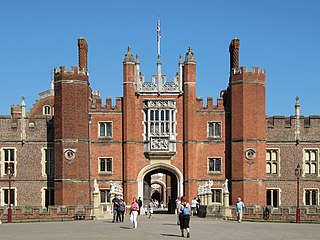
Hampton Court Palace is a Grade I listed royal palace in the London Borough of Richmond upon Thames, 12 miles southwest and upstream of central London on the River Thames. Opened to the public, the palace is managed by Historic Royal Palaces, a charity set up to preserve several unoccupied royal properties.

The Most Noble Order of the Garter is an order of chivalry founded by Edward III of England in 1348. The most senior order of knighthood in the British honours system, it is outranked in precedence only by the decorations of the Victoria Cross and the George Cross. The Order of the Garter is dedicated to the image and arms of Saint George, England's patron saint.

Sir Godfrey Kneller, 1st Baronet was a German-born British painter. The leading portraitist in England during the late Stuart and early Georgian eras, he served as court painter to successive English and British monarchs, including Charles II of England and George I of Great Britain. Kneller also painted scientists such as Isaac Newton, foreign monarchs such as Louis XIV of France and visitors to England such as Michael Shen Fu-Tsung. A pioneer of the kit-cat portrait, he was also commissioned by William III of England to paint eight "Hampton Court Beauties" to match a similar series of paintings of Charles II's "Windsor Beauties" that had been painted by Kneller's predecessor as court painter, Peter Lely.
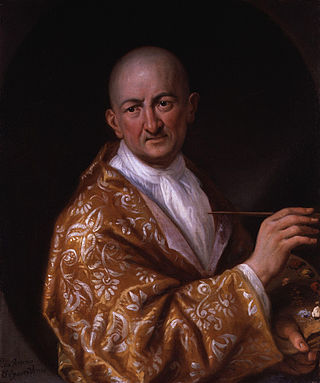
Antonio Verrio was an Italian painter. He was responsible for introducing Baroque mural painting into England and served the Crown over a thirty-year period.

Grinling Gibbons was an Anglo-Dutch sculptor and wood carver known for his work in England, including Windsor Castle, the Royal Hospital Chelsea and Hampton Court Palace, St Paul's Cathedral and other London churches, Petworth House and other country houses, Trinity College, Oxford and Trinity College, Cambridge. Gibbons was born to English parents in Holland, where he was educated.

A chapel royal is an establishment in the British and Canadian royal households serving the spiritual needs of the sovereign and the royal family.
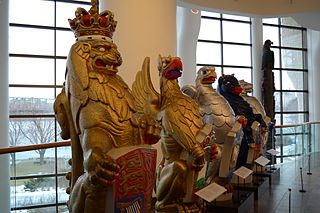
The Queen's Beasts are ten heraldic statues representing the genealogy of Queen Elizabeth II, depicted as the Royal supporters of England. They stood in front of the temporary western annexe to Westminster Abbey for the Queen's coronation in 1953. Each of the Queen's Beasts consists of a heraldic beast supporting a shield bearing a badge or arms of a family associated with the ancestry of Queen Elizabeth II. They were commissioned by the British Ministry of Works from the sculptor James Woodford, who was paid the sum of £2,750 for the work. They were uncoloured except for their shields at the coronation. They are now on display in the Canadian Museum of History in Gatineau, Quebec.
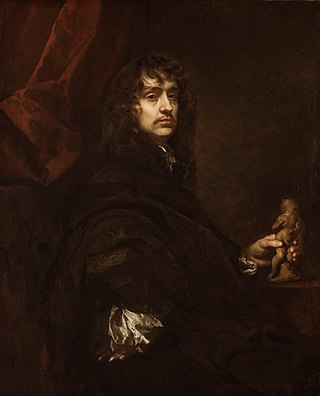
Sir Peter Lely was a painter of Dutch origin whose career was nearly all spent in England, where he became the dominant portrait painter to the court. He became a naturalised British subject and was knighted in 1679.
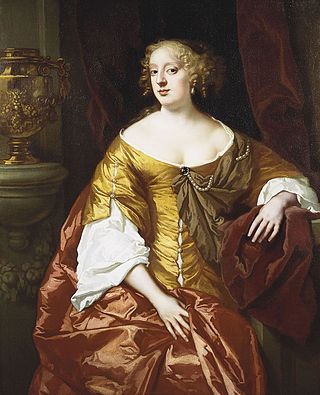
The Windsor Beauties are a set of portrait paintings, still in the Royal Collection, by Sir Peter Lely and his workshop, produced in the early to mid-1660s, that depict ladies of the court of King Charles II, some of whom were his mistresses. The name stems from the original location of the collection, which was at Windsor Castle. In 2022, they were on display at Hampton Court Palace.

The Royal Collection of the British royal family is the largest private art collection in the world.

The artists of the Tudor court are the painters and limners engaged by the monarchs of England's Tudor dynasty and their courtiers between 1485 and 1603, from the reign of Henry VII to the death of Elizabeth I.
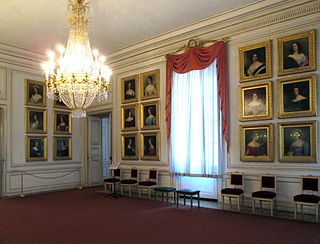
The Gallery of Beauties is a collection of 38 portraits of the most beautiful women from the nobility and bourgeoisie of Munich, Germany, gathered by Ludwig I of Bavaria in the south pavilion of his Nymphenburg Palace. All but two were painted between 1827 and 1850 by Joseph Karl Stieler, the others by Friedrich Dürck, a student of his.
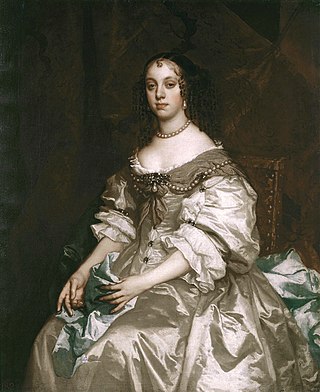
The title of Principal Painter in Ordinary to the King or Queen of England or, later, Great Britain, was awarded to a number of artists, nearly all mainly portraitists. It was different from the role of Serjeant Painter, and similar to the earlier role of "King's Painter". Other painters, for example Nicholas Hilliard had similar roles with different titles. "Principal Painter in Ordinary", first used for Sir Anthony Van Dyck, became settled as the usual title with John Riley in 1689.

The Waterloo Chamber, dating from 1830–31, is a large room in Windsor Castle dedicated to the military defeat of the French Emperor Napoleon Bonaparte by British, Prussian, Russian, and Austrian forces under the command of the Duke of Wellington at the Battle of Waterloo.
Gareth Russell is a Northern Irish historian, author, and broadcaster.
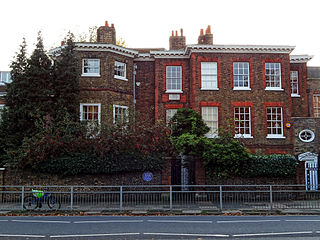
The Old Court House is a Grade II* listed house located off Hampton Court Green in the London Borough of Richmond upon Thames; its origins date back to 1536. The architect Sir Christopher Wren, who lived there from 1708 to 1723, was given a 50-year lease on the property by Queen Anne in lieu of overdue payments for his work on St Paul's Cathedral. The lease passed from Wren's son to his grandson. It was purchased from the Crown Estate in 1984.

Charles I in Three Positions, also known as the Triple Portrait of Charles I, is an oil painting of Charles I of England painted 1635–1636 by the Flemish artist Sir Anthony van Dyck, showing the king from three viewpoints: left full profile, face on, and right three-quarter profile. It is currently part of the Royal Collection.
The Story of Abraham is a set of ten Brussels tapestries depicting stories from the life of the biblical prophet Abraham. They appear to have been designed by Bernaert van Orley initially, but completed by Pieter Coecke van Aelst around 1537, both artists who were leading designers for the Brussels workshops. Three sets survive.

Jane Myddelton or Middleton, was a reputed English beauty of the Restoration period, one of the Windsor Beauties. Thomas Seccombe in the Dictionary of National Biography described celebrated portraits as "representing a soft and slightly torpid type of blonde loveliness, with voluptuous figure, full lips, auburn hair, and dark hazel eyes".



























